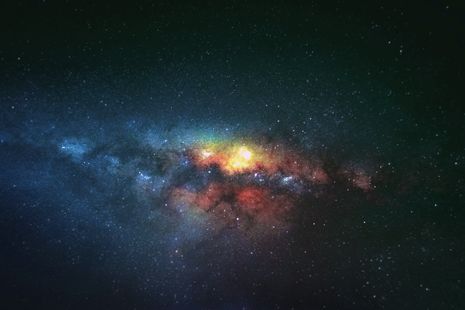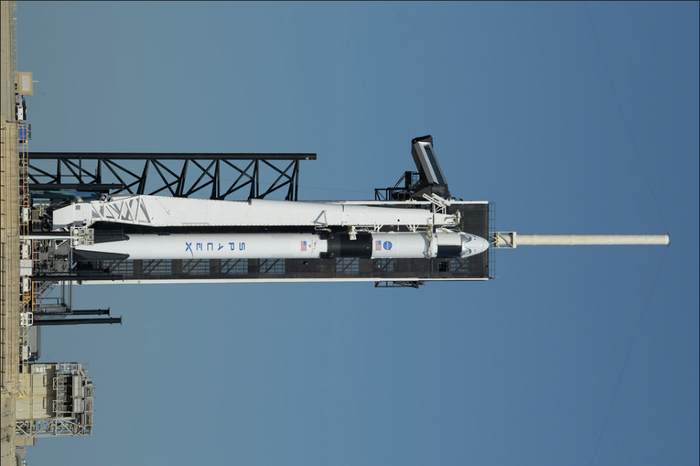The James Webb Space Telescope: looking back into the past
Science Editor Sambhavi Sneha Kumar explains how the recently launched James Webb Space Telescope differs from previous instruments, and what we may be able to discover from it

The Hubble Space Telescope (HST), launched into low Earth orbit in 1990, was a revolutionary step in astrophysics, facilitating breakthroughs such as the determination of the rate of expansion of the universe. Since then, it has remained in space, with Space Shuttle missions launched to carry out essential maintenance procedures and replacements. But there is a limit to how long the HST will be able to function: its orbit around the Earth will eventually decay due to drag, meaning that it will eventually pass into the Earth’s atmosphere again. If it is left to do so on its own accord, and subsequently make an uncontrolled descent, there would likely be damage and possibly risk to human life. It is unsurprising, therefore, that in 2009 NASA implemented technology on the HST to facilitate its controlled and safe de-orbit.
“It is not just ‘the next Hubble telescope’”
While the HST paved the way for groundbreaking discoveries, it still ultimately had its limitations, extending even beyond its lifespan. The James Webb Space Telescope (JWST), launched on Christmas Day from Kourou, French Guiana has, as of January 9th 2022, been fully deployed, and aims to push the boundaries of our knowledge even further. The result of international collaboration between NASA, the European Space Agency and the Canadian Space Agency, the JWST is formally recognised as the successor of the HST. But it is not just ‘the next Hubble telescope’. It is designed to operate at lower temperatures than the HST, and further away from the Earth: specifically, at the L2 Lagrangian point. Lagrangian points refer to specific points of equilibrium for an object with a relatively small mass under the influence of two larger orbiting bodies (the Earth and the Sun, in this case). Fewer orbital corrections are needed to maintain the desired orbit for satellites at such points, making them ideal for the placement of objects such as the JWST. Furthermore, the JWST is not fully serviceable in the same sense as the HST, but a docking ring included in its design means that other spacecraft will be able to visit it as needed.
The main goal of the JWST is to observe distant objects in the universe, beyond the reach of current instruments. The Hubble telescope, back in 2011, identified a galaxy of blue stars approximately 13.2 billion light years away: a record at the time. The galaxy existed 480 million years after the Big Bang (for context, the Big Bang is estimated to have occurred 13.8 billion years ago). It is expected to detect stars nearly 300 million years older that those currently detected by the HST.
“The main goal of the JWST is to observe distant objects in the universe, beyond the reach of current instruments”
The JWST works by its emphasis on infrared astronomy, based on the phenomenon of cosmological red shift. Essentially, the greater the distance between us and an object in the universe, the ‘younger’ it appears, because the light takes longer to reach us. The Universe has been expanding since the big bang, with objects further away from us moving away faster, and so as light travels towards us from distant objects it gets ‘red-shifted’: relative increases in wavelength. The JWST will focus on collecting light in the infrared range of the electromagnetic spectrum of light, and is expected to be able to quite literally ‘see back in time’ to events such as galaxy formation just a few hundred million years after the Big Bang.
The JWST’s mission objectives can be summarised by these key goals:
- To observe the universe’s first galaxies
- To study galaxy formation and evolution
- To study star and planet formation
- To look for exoplanets with the potential for life
It is hard to predict exactly what the JWST might discover, but the prospects are exciting. In a time when we are facing significant challenge on Earth in the form of the COVID-19 pandemic, the potential for new discoveries beyond our planet is refreshing. As put by Amber Straughn, the deputy project scientist for the JWST at the NASA Goddard Space Flight Center, big steps such as this in astrophysics can allow us to “learn things that we never expected”.
 News / SU reluctantly registers controversial women’s soc18 December 2025
News / SU reluctantly registers controversial women’s soc18 December 2025 Features / Should I stay or should I go? Cambridge students and alumni reflect on how their memories stay with them15 December 2025
Features / Should I stay or should I go? Cambridge students and alumni reflect on how their memories stay with them15 December 2025 News / Dons warn PM about Vet School closure16 December 2025
News / Dons warn PM about Vet School closure16 December 2025 News / Cambridge study finds students learn better with notes than AI13 December 2025
News / Cambridge study finds students learn better with notes than AI13 December 2025 Comment / The magic of an eight-week term15 December 2025
Comment / The magic of an eight-week term15 December 2025









